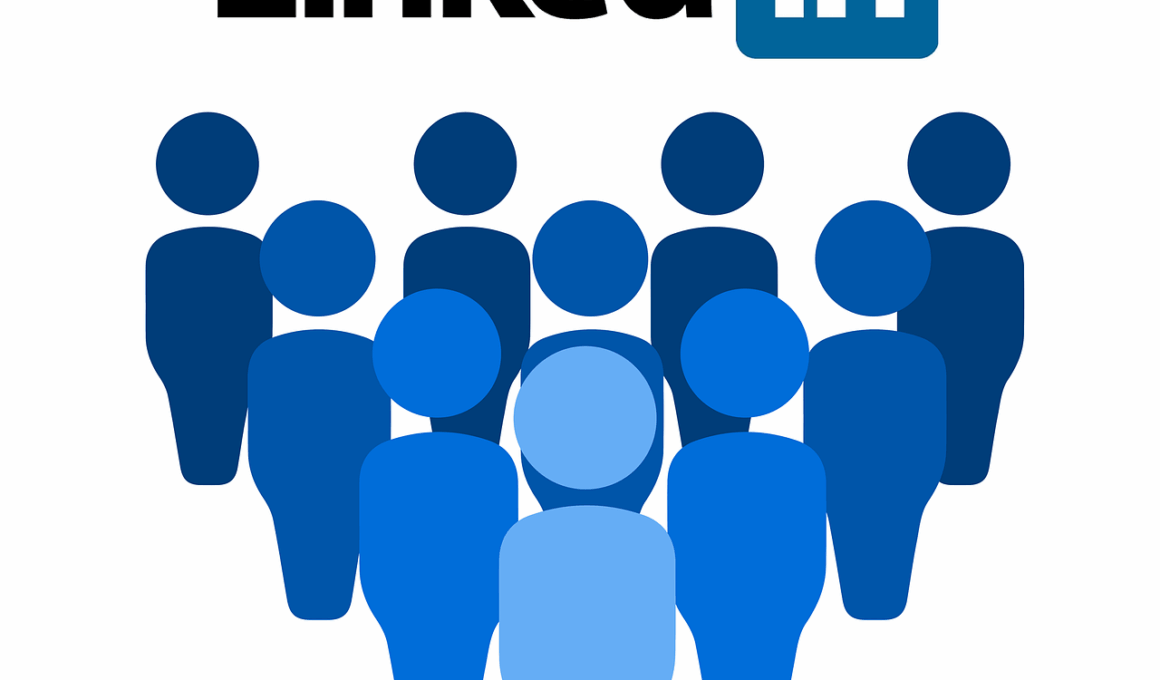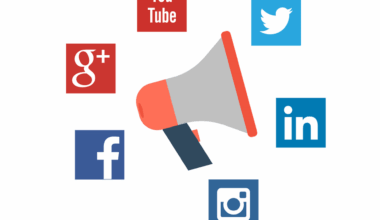Is Paid LinkedIn Advertising Worth the Investment?
In today’s competitive business landscape, various strategies exist for organizations to connect with their target audiences effectively. One popular option is LinkedIn advertising, which is a powerful tool in the digital marketing arsenal. However, the effectiveness and return on investment (ROI) of paid LinkedIn advertising often raise questions. Many businesses grapple with whether to allocate substantial budgets to sponsored content or enhance their organic reach. Understanding these two contrasting growth methods is essential for making informed decisions. Paid advertising typically allows immediate access to a broad audience, while organic methods require time and effort to cultivate relationships. Information about reach, engagement, and conversion will illuminate how these methods work. Various factors influence the success of LinkedIn campaigns, such as targeting capabilities, content quality, and budget allocation. Ultimately, determining the best approach hinges on individual business objectives, target audience, and overall marketing strategy. Identifying which strategy complements your brand will unlock greater opportunities for growth, whether paid or organic. Evaluating past advertising results and considering long-term goals becomes critical in making a decision.
One of the most significant benefits of paid LinkedIn advertising is its ability to target specific audiences precisely. Unlike many other platforms, LinkedIn provides detailed targeting options, which include industry, job title, company size, and location. This level of precision ensures that your ads are seen by individuals who are more likely to be interested in your services or products. Moreover, LinkedIn allows for retargeting, meaning you can re-engage users who have previously interacted with your content. While organic growth takes time to develop, particularly on a professional network like LinkedIn, paid advertising delivers swift results. Companies can benefit from immediate visibility and lead generation, making it a viable option for time-sensitive campaigns or new launches. For B2B companies, the platform’s ability to reach decision-makers and influencers is unparalleled. A successful paid advertising strategy often involves a mixture of sponsored content, InMail, and text ads. Many brands have reported increased brand awareness and engagement levels after implementing targeted campaigns. However, businesses must monitor ad performance and adjust their approach as needed to maximize effectiveness.
Measuring ROI on LinkedIn Ads
While the advantages of paid advertising are clear, the challenge lies in measuring its return on investment (ROI). Businesses must analyze metrics such as click-through rates (CTR), conversion rates, and customer acquisition costs to understand the effectiveness of each campaign. LinkedIn provides various analytical tools for advertisers, allowing them to track the performance of their ads comprehensively. Understanding these metrics requires ongoing monitoring and adjustment of ads to ensure that they remain effective. Additionally, setting specific goals before launching a campaign is crucial. Whether the objective is lead generation, brand awareness, or sales conversion, these goals will guide advertising efforts and budget allocation. When evaluating ad performance, it’s important to compare results against organic metrics as well. This comparison will help businesses determine whether the investments in paid advertisements yield significant benefits over organic tactics. Tracking both the immediate effects and long-term impacts of advertising will build a more robust understanding of ROI potential. This dual approach will help to refine future strategies as companies navigate the changing digital landscape.
Organic growth, on the other hand, emphasizes building relationships and engaging with followers without the need for ad spend. This method relies on creating high-quality content that provides value to your audience, cultivating a loyal network over time. With sustained effort, businesses can see increased organic engagement through likes, shares, and comments which enhance their visibility. By leveraging organic strategies, companies often enjoy a higher trust factor among potential clients. As users become familiar with a brand through authentic interactions, they are more likely to convert into paying customers in the future. While organic growth takes time, the following benefits make it worthwhile. No ad costs mean higher profit margins, and organic efforts often result in a more engaged audience, as followers who choose to connect with your brand genuinely value your content. Consistent posting, participation in groups, and sharing insights contribute to organic growth. Furthermore, effective organic strategies often complement paid efforts, leading to a well-rounded marketing approach. Combining both strategies allows businesses to maximize reach while saving costs on long-term campaigns, enhancing overall growth at different stages.
Comparing Costs: Paid vs Organic
When deciding between paid and organic strategies, understanding the costs associated with each is crucial. Paid advertising may seem straightforward, but expenses vary based on targeting and bidding options. Financial commitments include daily budgets, maximum bids, and any additional expenses. In contrast, organic growth may involve costs related to content creation, social media management, and marketing tools. While organic methods can appear cost-effective in the long run, they require substantial time investment. Additionally, maintaining an active online presence through organic channels can strain resources, as regular engagement is necessary to retain audience interest. Companies may also find that while organic efforts take longer to yield significant results, the eventual payoffs can be greater. Organizations must carefully consider their unique circumstances and available resources when budgeting for either strategy. Understanding your audience’s preferences and behaviors can also dictate which method would be more effective. Conducting competitor analysis and utilizing available data on previous campaigns will provide insight into successful practices, helping to establish a comprehensive budget for advertising efforts.
Another factor shaping the effectiveness of LinkedIn advertising versus organic growth is the nature of the audience itself. LinkedIn’s user base consists of professionals seeking networking, resources, and industry insights. This demographic inherently reacts differently to advertisements compared to other platforms like Facebook or Instagram. Understanding the audience engagement on LinkedIn is imperative for creating content that resonates effectively. Professionals are often more receptive to informative, value-driven content rather than flashy tactics. Thus, ads that provide insights, case studies, or educational material will likely garner better responses. Moreover, while users may scroll past ads on social media platforms, LinkedIn users typically actively engage in professional discussions. Crafting compelling ads that align with users’ professional interests creates an opportunity for deeper engagement. Moreover, leveraging the platform’s professional network can amplify these efforts, creating referral scenarios through provided content. As brands successfully navigate these nuances within their advertising strategy, they can establish a more profound connection with their audience. This approach ultimately leads to improved brand loyalty and enhanced credibility among targeted users.
Final Considerations on Advertising Strategy
In conclusion, the decision to pursue paid LinkedIn advertising or lean towards organic growth depends on various strategic elements. Both tactics have distinct advantages and potential drawbacks. Companies should weigh factors such as immediate needs, budget, and marketing objectives before deciding which path to take. For immediate visibility and engagement, paid advertising may be the best route, offering precise targeting and faster results. Yet, for businesses with a long-term vision that values audience connection, organic methods may be more suitable. A hybrid approach often proves beneficial, harnessing the immediate impact of paid ads while continuing to cultivate an organic presence. By continuously assessing performance and adjusting tactics, businesses can create effective marketing avenues that meet their evolving needs. Engaging with audiences through authentic content while capitalizing on the swift nature of paid advertising fosters the best opportunities. Regardless of the choice, continual evaluation, clear marketing goals, and adaptability will lead to consistent growth and brand recognition in the competitive LinkedIn landscape.
In essence, whether to invest in paid LinkedIn advertising or focus on organic growth is a decision that should align with overarching business goals. Understanding both strategies’ pros and cons allows brands to make informed choices. As companies navigate the complexities of marketing in the modern era, leveraging data and analytics becomes crucial for shaping future campaigns. Ultimately, striking a balance between paid and organic efforts will propel businesses forward while optimizing their presence on this esteemed professional platform. Keeping sight of audience preferences and behaviors is critical during this process. By continually refining advertising strategies, companies can ensure they remain relevant and engaging to their target users. In the fast-dynamic nature of digital marketing, being well-prepared to adapt will ensure long-term sustainability and success. Every business must consider its unique objectives, environment, and resources before making decisions. In an age dominated by digital interactions, achieving the right mix can foster community engagement. Focus on creating value, whether through paid or organic means, enhances customer relationships and further solidifies brand positioning. Adapting and evolving with industry trends will secure businesses a competitive edge.


